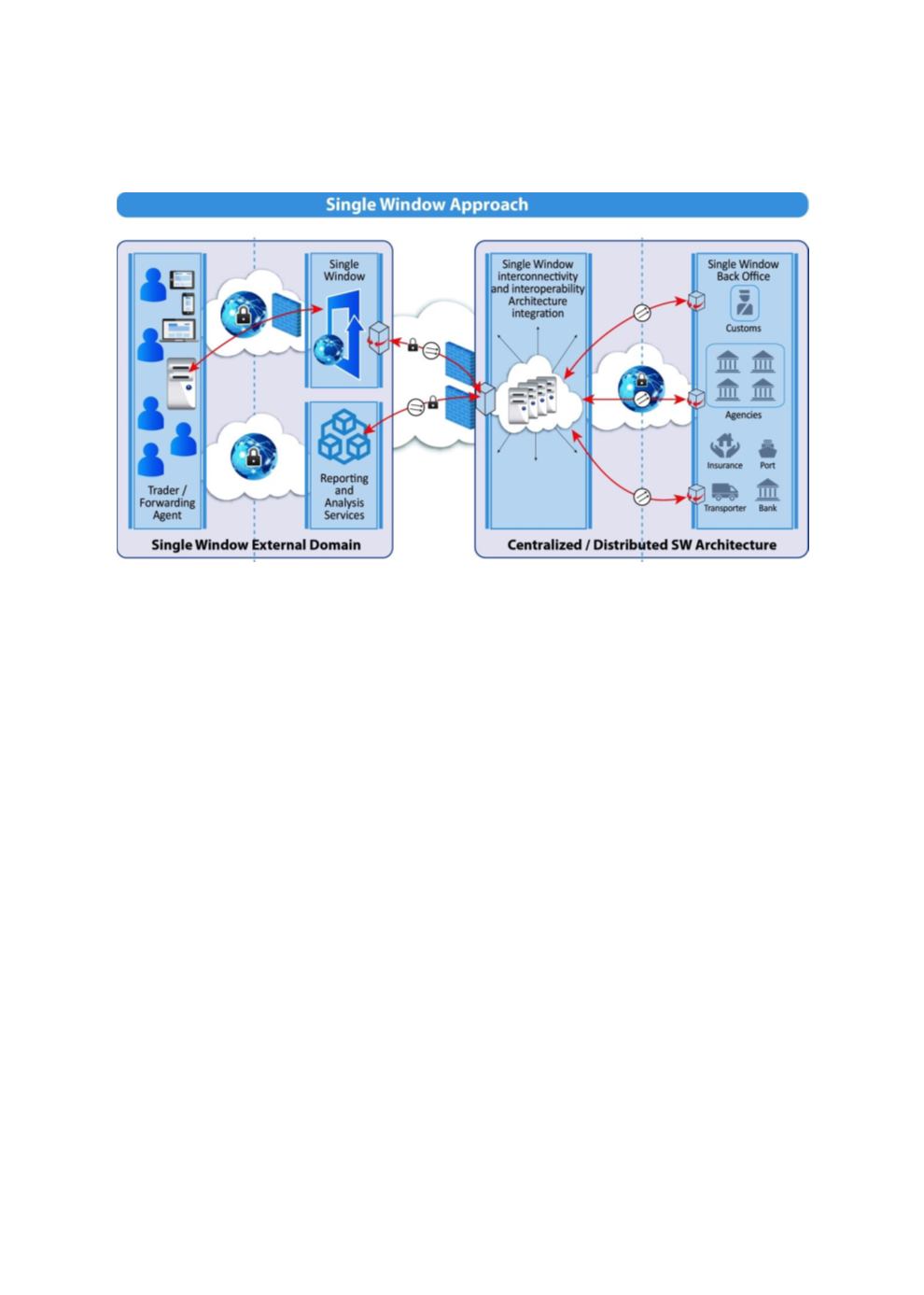

Single Window Systems
In the OIC Member States
9
Figure 1: High Level Single Window Concept
Source: Authors’ own construction
A Single Window has two different types of users: end-users that request and consume a service
from the Single Window, and service providers that deliver a service to the end-user through
the Single Window. Together these two groups make up the stakeholders of a Single Window as
shown in Figure 2. The stakeholders include traders and their representatives as end-users and
the different service providers, which can be departmental or non-departmental public bodies
as well as commercial entities.
Single Windows cover different trade related activities, such as:
Activities of government agencies involved in the processing of trade procedures, such
as government licenses, authorizations and certifications, customs clearance, food and
sanitary inspection. The numbers of government agencies and their denominations
varies according to the institutional set up but in some countries more than 30
government agencies may intervene in a trade transaction;
Activities of government agencies and organizations involved in the physical movement
of cargo and the means of transport, such as port movement notifications, arrival and
departure procedure, dangerous goods declarations;
Activities of commercial service providers involved in the physical movement of goods,
such as warehousing, loading and unloading, transportation, and consolidation; and
Other activities of business involved in selling and sourcing of goods, such as invoicing
and insurance.
















